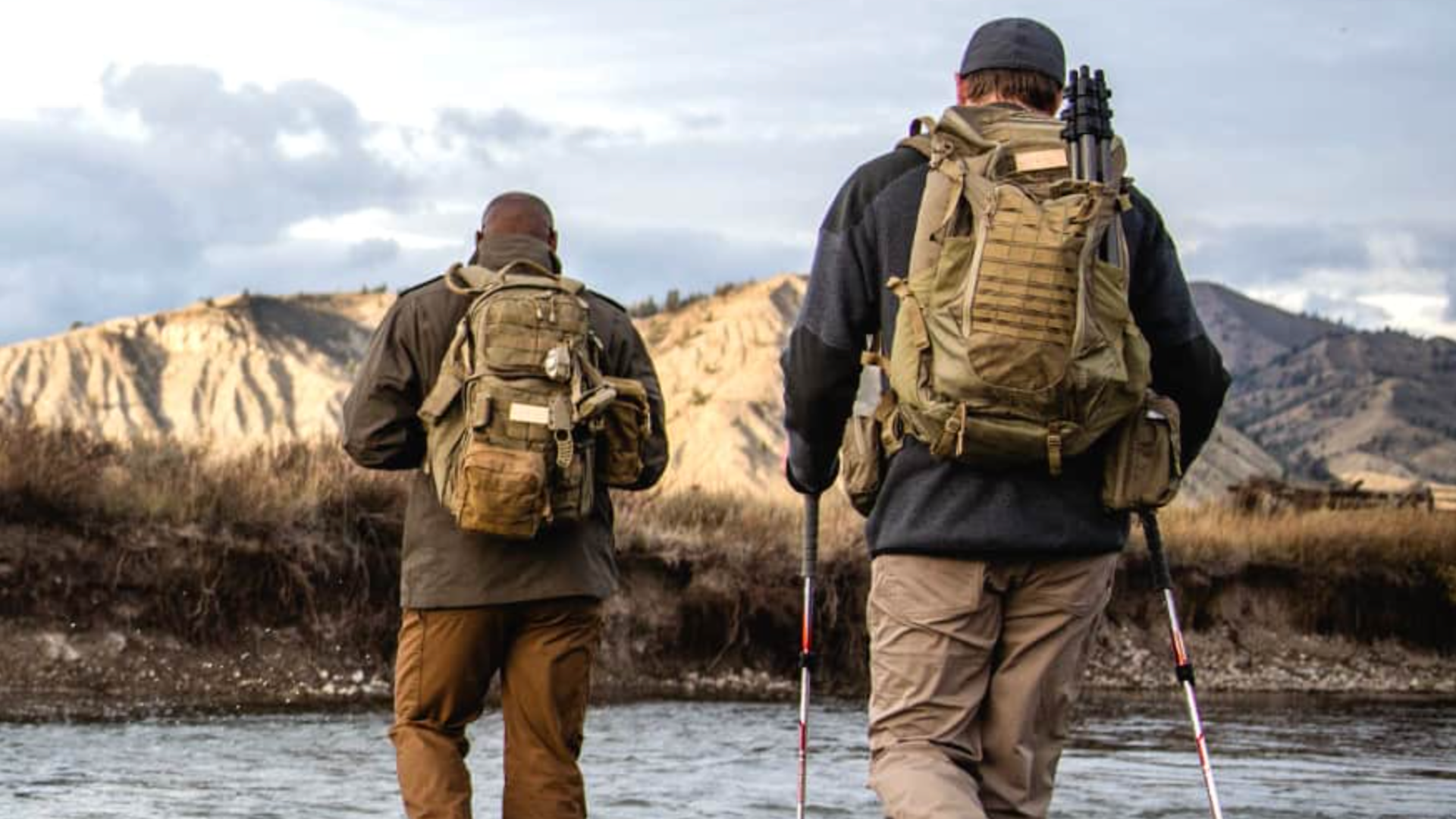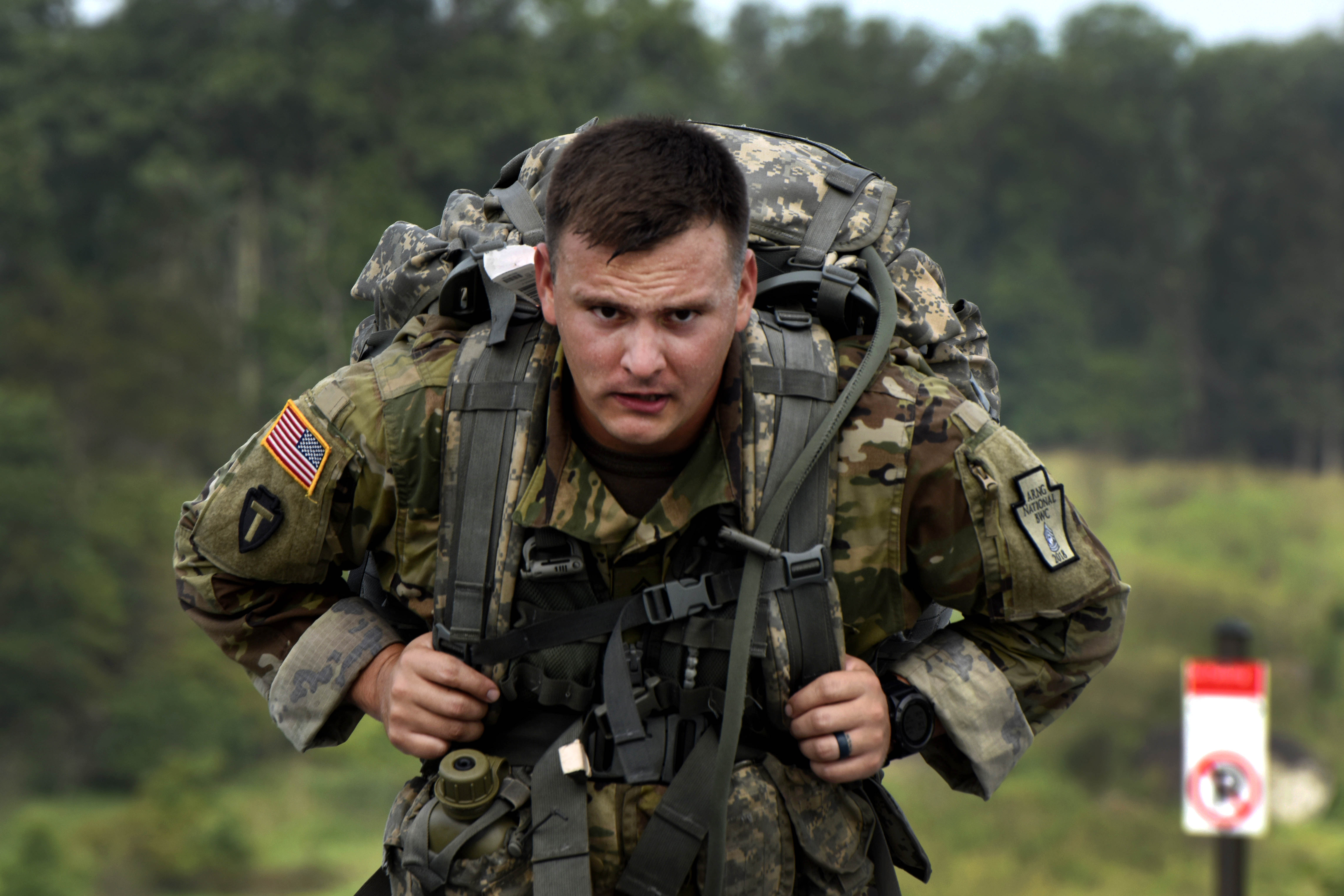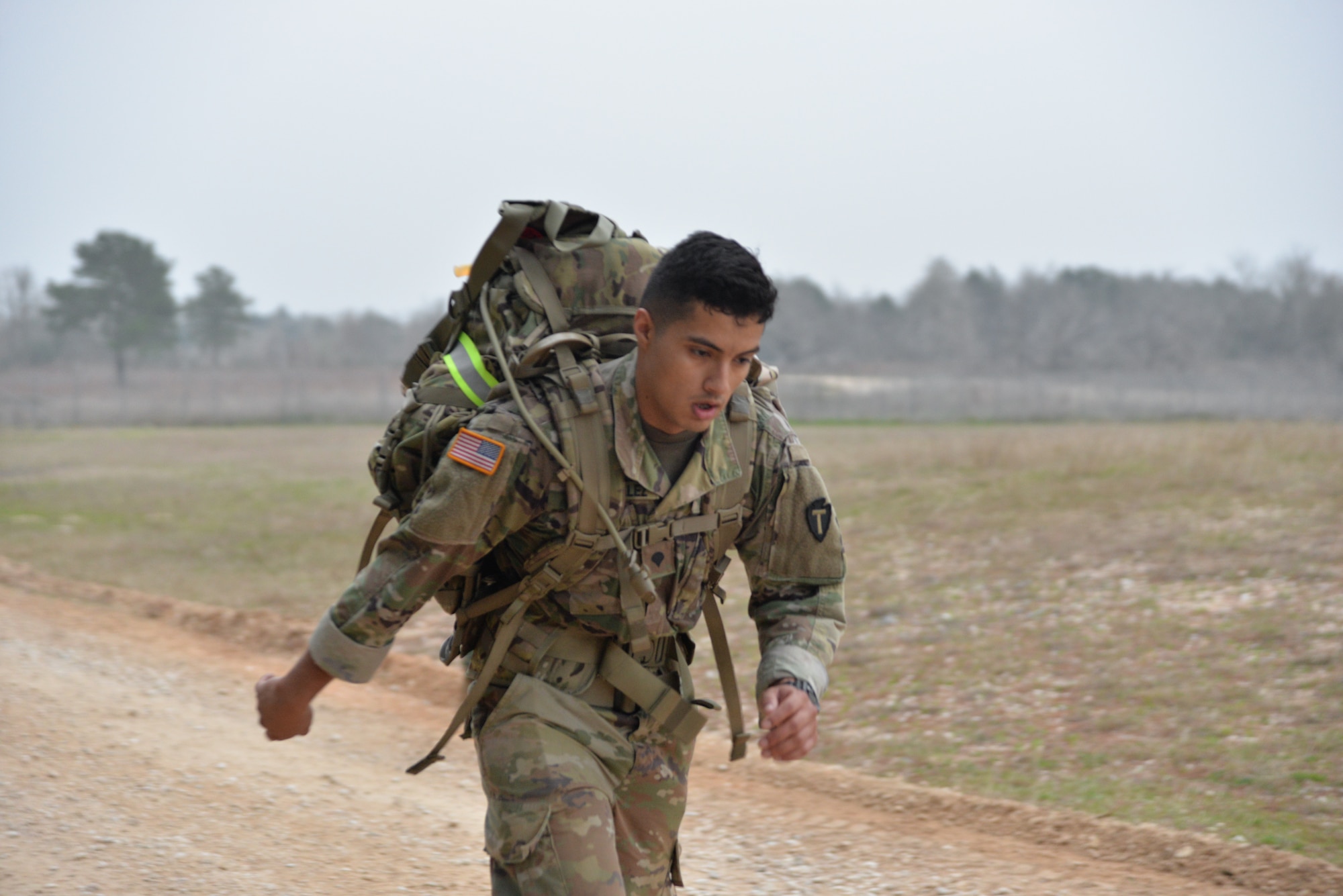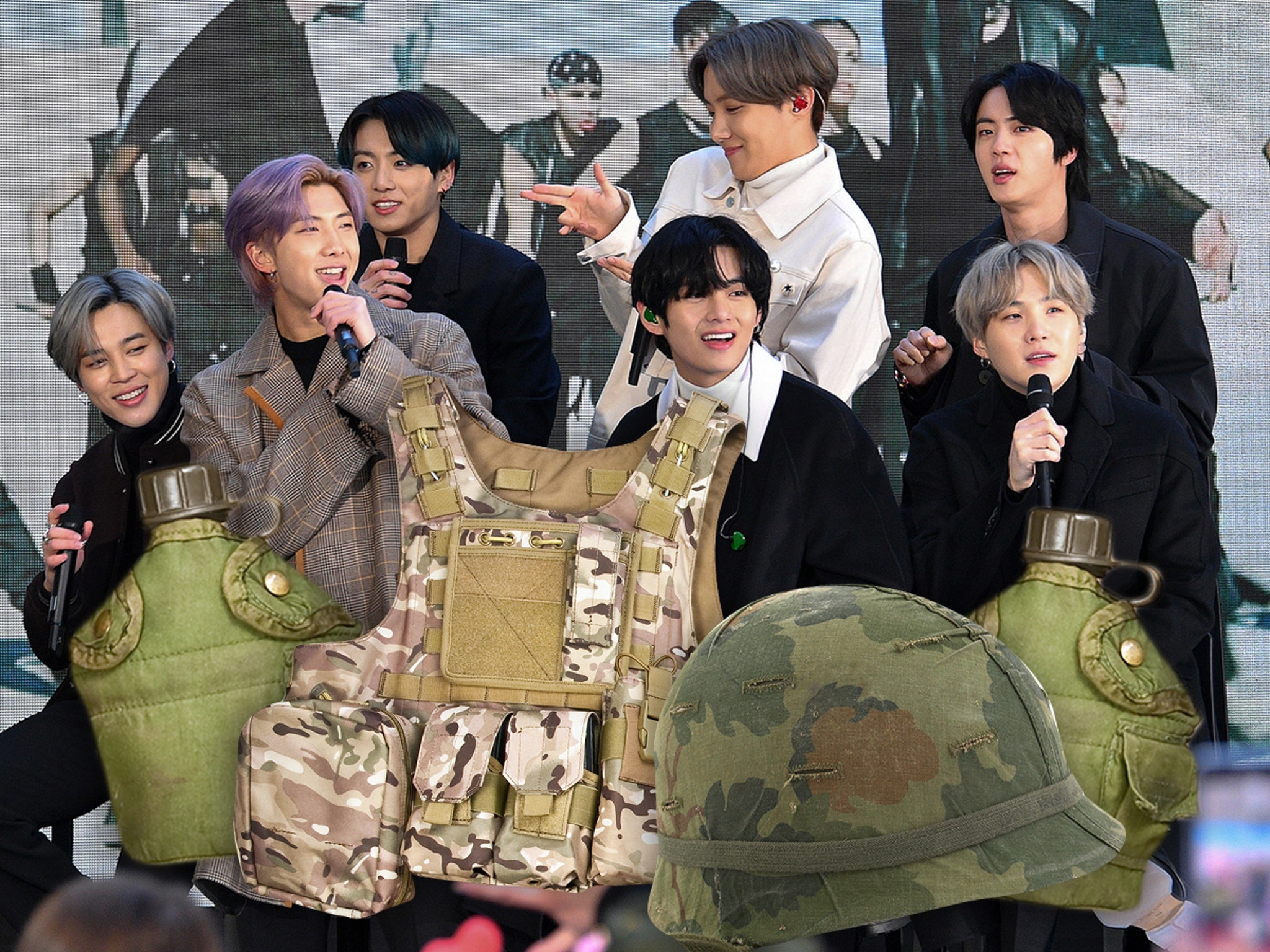Black Military Woman - On November 15, 1866, Cathay Williams enlisted in the U.S. Regular Army in St. Louis, Missouri. She stood at 5'9" and when asked her name, she replied William Cathay. She was assigned to Company A of the 38th Infantry (a Buffalo Soldiers unit) and was stationed at Jefferson Barracks, Missouri.
By April 1867, William Cathay's company had marched to Fort Riley, Kansas but she was hospitalized several times and did not return to duty until May. In June, her company moved to Fort Harker, Kansas. On July 20, 1867, Company A arrived at Fort Union, New Mexico – a march of 536 miles.
Black Military Woman
On September 7, they marched to Fort Cummings, New Mexico and were stationed there for eight months. William Cathay apparently withstood the marches as well as any man. She did garrison duty, drilled, and trained and went on scouts for signs of Indians.
– World War I Hero Freddie Stowers Posthumously Awarded The Medal Of Honor
Stowers, who died fighting in France in 1918, is the first and only Black service member to receive the nation's highest award for valor for actions during The Great War. Stowers led an assault on German trenches, continuing to lead and fight, even after being wounded twice.
Seventy-three years later, his sisters Georgina and Mary received the award on his behalf at a White House ceremony. African-American women served with distinction during Operation Desert Storm as officers, noncommissioned officers, and enlisted soldiers. Of the 35,000 females who went to Desert Storm, an estimated 40% of them were African-Americans.
According to Staff Sergeant Betty Brown of the Washington, DC Army National Guard, all of these women endured the heat and primitive conditions which included no electricity, no running water, no bathrooms, and sanitation details (cleaning the 10 gallon trash cans that served as
toilets). African-American women continued to serve in the Korean Conflict. As political and military leaders considered instituting a peacetime draft, it occurred to some that if volunteer servicewomen, who had filled manpower needs during World War II, could be used to fill the military's increasing need for office workers, fewer men would have to be drafted
Over Years Of Service The History Of Women In The Us Military
. Cost comparisons revealed that training men was more expensive than training women. The main reason for the cost difference was that young men frequently had dependents who required housing, medical care, and other allowances. Women, on the other hand, were not accepted into the military if they had under-age dependents.
On June 12, 1948, President Harry S. Truman signed into law the Women's Armed Services Integration Act that allowed women in the Regular Army and the Organized Reserve Corps. A new training center at Camp Lee, Virginia opened in July 1948 (armywomen, 2010).
Although the bill established a permanent place for women in the Army, Navy, Air Force, and Marine Corps, it set a 2% ceiling on the number of women in each service (Bellafaire, 2010). From the Revolutionary War to today's fighter pilots, women have proudly served in the U.S.
military for over 200 years. Here is a history of women in the military, and how their roles have changed over time. In 1890, after a trip to care for her dying son, Baker wrote her memoirs which she privately published as a book in 1902 as Reminiscences of My Life in Camp with the 33rd US Colored Troops.
– James Anderson Jr Is The First African American Marine Awarded The Medal Of Honor
Susie Baker King Taylor died in 1912 at the age of sixty-four in Boston. African American women have played a role in every war effort in United States history. They endured physical discomfort and personal criticism, while many of their contributions were unrecognized and unrewarded.
They placed themselves in danger's path - offering their abilities and strengths to preserve values and ensure freedom. Women stood side by side with fathers, husbands, and sons to nurse and comfort the suffering; they engaged in the danger of spying, chronicled the pain of war, and offered spiritual healing (Sheafer, 1996).
In addition, black women faced racial and gender discrimination as part of their military service. Nevertheless, there were a number of "breakthrough" moments as they persistently pursued their right to serve. Born in Heidelberg, West Germany, of African American and Hispanic parents in a U.S.
military family, she graduated from Oxon Hill High School in Maryland, where she ranked among the top-10 students in her class. In July 2001, after graduating from high school, Perez entered the United States Military Academy at West Point.
– Jeanine Mcintosh Becomes The First African American Female Aviator In The Coast Guard
There she was an exemplary student and talented track athlete, becoming the highest-ranking African-American female cadet in the history of West Point. Following graduation from West Point in 2005, she was commissioned a Second Lieutenant in the 204th Support Battalion, 2nd Brigade, 4th Infantry Division of the United States Army.
Perez was killed in action on September 12, 2006, while leading a convoy through Al Kifl, Iraq, a mission for which she had volunteered. She was the first female African-American officer in US military history to die in combat.
Before the Tuskegee Airmen, there were the Hellfighters from Harlem, a group of African American National Guard Soldiers of New York's 15th Infantry Regiment who fought for the right to serve in combat during World War I.
In November 1979, Second Lieutenant Marcella A. Hayes is the 55th woman out of 48,000 officers to graduate from the Army Aviation School in Ft Rucker, Alabama. She became the first black woman pilot in the U.S.
/https://tf-cmsv2-smithsonianmag-media.s3.amazonaws.com/filer/d6/e8/d6e82604-a329-49bf-a09a-bcc3f3b5a659/6bc1a2ac-263f-4ef8-b92f-f82818848884.jpg)
Moments You Supported Us Troops Deployed To Eastern Europe In The Year Since Russia Invaded Ukraine
armed forces. In celebration of Black History Month and in honor of all the brave black men and women who have served our country with valor and distinction, the USO is taking a moment to shine a light on the astonishing bravery of six African American service members who went above
and beyond the call of duty. U.S. Navy Vice Adm. Michele Howard, the first African-American woman to command a Navy combat ship, made news in 2009 when she was involved in the rescue of the merchant ship Maersk Alabama's captain from Somali pirates.
The Indians would come down through the pine forests close to Fort Bayard and fire into the post. Sentinels at the haystacks were often found killed with arrows. It was unsafe to leave the post without an escort (Tucker, 2002).
When the Viet Nam War ended, the draft also ended. For a volunteer army to work, women of all races were needed. Women were able to join the National Guard and were admitted to ROTC programs.
In 1976, women were allowed to enroll at the service academies. Anderson was killed in February 1967 when he grabbed a live enemy grenade during an intense firefight in the dense jungle and used his body to absorb the blast.
His extraordinary courage saved his comrades from serious injury and possible death. From its beginning in 1942, black women enlisted in the WAAC (Women's Auxiliary Army Corps) - the first group arrived at Fort Des Moines, Iowa where there were 400 white women and 40 black women.
Enlisted women served in segregated units, participated in segregated training, lived in separate quarters, ate at separate tables, and used separate recreational facilities (womensmemorial, 2010). Women - black and white - account for 15% of all military service and 10% serve as soldiers in Iraq and Afghanistan.
Compared to the Gulf War, the number of enlisted women soldiers has decreased from 216,000 to 17,000 women in Iraq and Afghanistan. At the beginning of the Gulf War, women are barred from jobs that involve direct combat (on submarines, with the Special Forces, and infantry, armor, and artillery positions).
They are also barred from "collocated units" that support combat troops. A woman could serve as a medic but not in a unit that "collocated" or supported a unit on the front line. The death and injury toll for women in Iraq and Afghanistan continues to climb.

According to U.S. military records, 33 women have been killed since 2001. In addition, 240 women have sustained combat-related wounds and are left with permanent disabilities that sometimes require amputation (Ginty, 2010). Specialist Grendel Alice Howard was assigned to the First Logistical Command Headquarters at Long Binh as an administrative assistant to the Non-Commissioned Officer in charge.
She interviewed soldiers and wrote stories about them for publication. After a 34-month tour, she was promoted to Sergeant First Class and later to Sergeant Major. She earned the Bronze Star with the Oak Leaf Cluster and the Army Commendation Medal with the Oak Leak Cluster.
On September 1, 1979, Hazel W. Johnson became the first black woman general office when she assumed the position of chief of the Army Nurse Corps. Later, on June 22, 1995 at the groundbreaking ceremony for the Women in Military Service for America Memorial, Brigadier General Hazel W. Johnson-Brown US Army Nurse Corps (retired) said:
In 1994, the Army dropped a rule prohibiting women from filing positions with a "substantial risk of capture." These changes opened up 90% of military jobs to women for the first time. Today, women take infantry training alongside men.
They work as engineers, truck drivers, pilots, and weapon experts. Born on the Grest Farm in Liberty County, Georgia, on August 6, 1848, Susie Baker King Taylor was raised as an enslaved person. Her mother was a domestic servant for the Grest family.
At the age of 7, Baker and her brother were sent to live with their grandmother in Savannah. Even with the strict laws against formal education of African Americans, they both attended two secret schools taught by black women.
Baker soon became a skilled reader and writer. By 1860, having been taught everything these two black educators could offer, Baker befriended two white individuals, a girl and a boy, who also offered to teach her lessons even though they knew it violated Georgia law and custom.
As the war escalated, public pressure increased to enlist black women. Eighteen black Red Cross nurses were offered Army Nurse Corps assignments at Camp Grant, Illinois and Camp Sherman, Ohio. They cared for German prisoners of war and black soldiers.
By August 1919, all black nurses were released from service. For the first time in military history, African-American females had an official organization where they found leadership and direction to use their abilities. The National Association of Colored Graduate Nurses was founded in 1909. In 1917, the co-founder of the Red Cross urged black nurses to enroll in the American Red Cross, although they were not accepted until two months before the war ended in November 1918.

African-American females continued to serve by making bandages, taking over jobs that men held so they could be soldiers, working in hospitals and troop centers, and serving in other relief organizations as they had in previous wars.
Many served in Hostess Houses operated by the Young Women's Christian Association, where they wrote letters home for illiterate soldiers and read incoming mail to them (Hodges, 1995). All of the bodies I saw—that will stay with me the rest of my life.
I've never witnessed such a large amount of dead bodies...just scattered everywhere. We came up just six hours after the fighting so we were relatively close behind the maneuver. There were civilians, but most of [the bodies] were Iraqi soldiers.
We saw children and some infants as well that were dismembered, a lot of their body parts... I don't think it's anything you ever forget. You just learn to live with it and continue on. Many black women left their jobs, families, husbands, and children when their country called them to war.
Major Marilyn Bridgette and Staff Sergeant Betty Brown, Army National Guard members, were called to the Gulf on Christmas Eve. They were told, "You've got 72 hours," recalled Sergeant Brown. Each person had to make a will and execute a power-of-attorney.
Preparing their families was by far the most difficult task. Army Major Carrie Kendrick said that her biggest challenge was alleviating the concerns her husband has about her safety. Her husband was also in the Army but was not called to duty in the Gulf (Randolph, 1991).
The U.S. Coast Guard had even less in the SPARS. Out of the highest number of women in the military during this period (271,000), only 4,000 were African-American women. There simply weren't many opportunities for them (Hodges, 1995).
Black American females again played the role of nurses. During this war, over 75 percent of all deaths resulted from typhoid and yellow fever. Many Black female volunteer nurses were told that they were immune to the diseases because their skin was darker and thicker.
Because of this, many of them exposed themselves to the diseases and became casualties when they returned home. Because of segregated living areas, the Whites never knew the high rate of casualties that these women suffered.

The Army was so pleased with the 32 contracted Black nurses, however, that many congressmen tried but failed to create a permanent corps of Army nurses. After the victory in Europe in May 1945 and the surrender of the Japanese in August, the training centers at Fort Oglethorpe and Fort Des Moines closed.
The War Department began a program aimed at retaining women in the service and re-enlisting those who had served. The Chief of Staff, Dwight D. Eisenhower, announced that he would ask Congress to make the WAC a part of the Regular Army and the Organized Reserve Corps.
By the end of May 1946, WAC numbers decreased from 99,000 to about 21,500. By May 1948, the numbers totaled approximately 6,500 women (armywomen, 2010). The question of opening the nurse corps to...colored nurses has from time to time received the serious consideration of this office;
but because of the necessity... of arranging their tours of duty in various regions of the United States as well as in our overseas dependencies [.] and of the difficulty if not impossibility of arranging proper quarters and messing facilities for them [.] their employment
has been found impractical in times of peace. You may rest assured that when military considerations make it practicable...to utilize colored nurses they will not be overlooked. The Korean War was the first armed conflict since the American Revolution that saw black and white Americans fighting in the same units.
President Truman issued Executive Order 9981, mandating an end to racial discrimination and segregation in the armed forces. Six years later after studying the effects of integration, the Department of Defense announced that segregation had been eliminated in all of the armed forces (Bellafaire, 2010).
Fort Huachuca in the Arizona desert had the largest concentration of black soldiers after the Army created the U.S. 93rd Infantry Division. By December 1942, the 32nd and 33rd Companies of the WAAC joined the men of the 93rd.
These women were postal clerks, stenographers, switchboard operators, motor truck drivers, and typists fulfilling jobs that released the men for combat (Moore and Taylor, 2003). Lieutenant Phoebe Jeter, who headed an all-male platoon, ordered 13 Patriot missiles fired and destroyed at least two Scuds (Iraqi surface-to-surface missiles).
She was the first and only woman to shoot down a Scud missile. (Randolph, 1991). Captain Cynthia Mosely, commanded Alpha Company, 24th Support Battalion Forward, 24th Infantry Division (Mechanized), a 100-person unit that supplied everything from fuel to water to ammunition.
Each unit resupplied fuel for all of the forward brigades because it was closest to the front lines. Her memories from her jeep on Highway 8 include this recollection: They kept Colonial authorities informed on the British.
With the promise of freedom from slavery as a motivating factor, the African-American woman found innovative ways to assist. According to Lucy Terry's written accounts of the war, Black women disguised themselves as men and fought side by side with them against the British, and kept the homes so that White women could go near their husbands during engagements.











